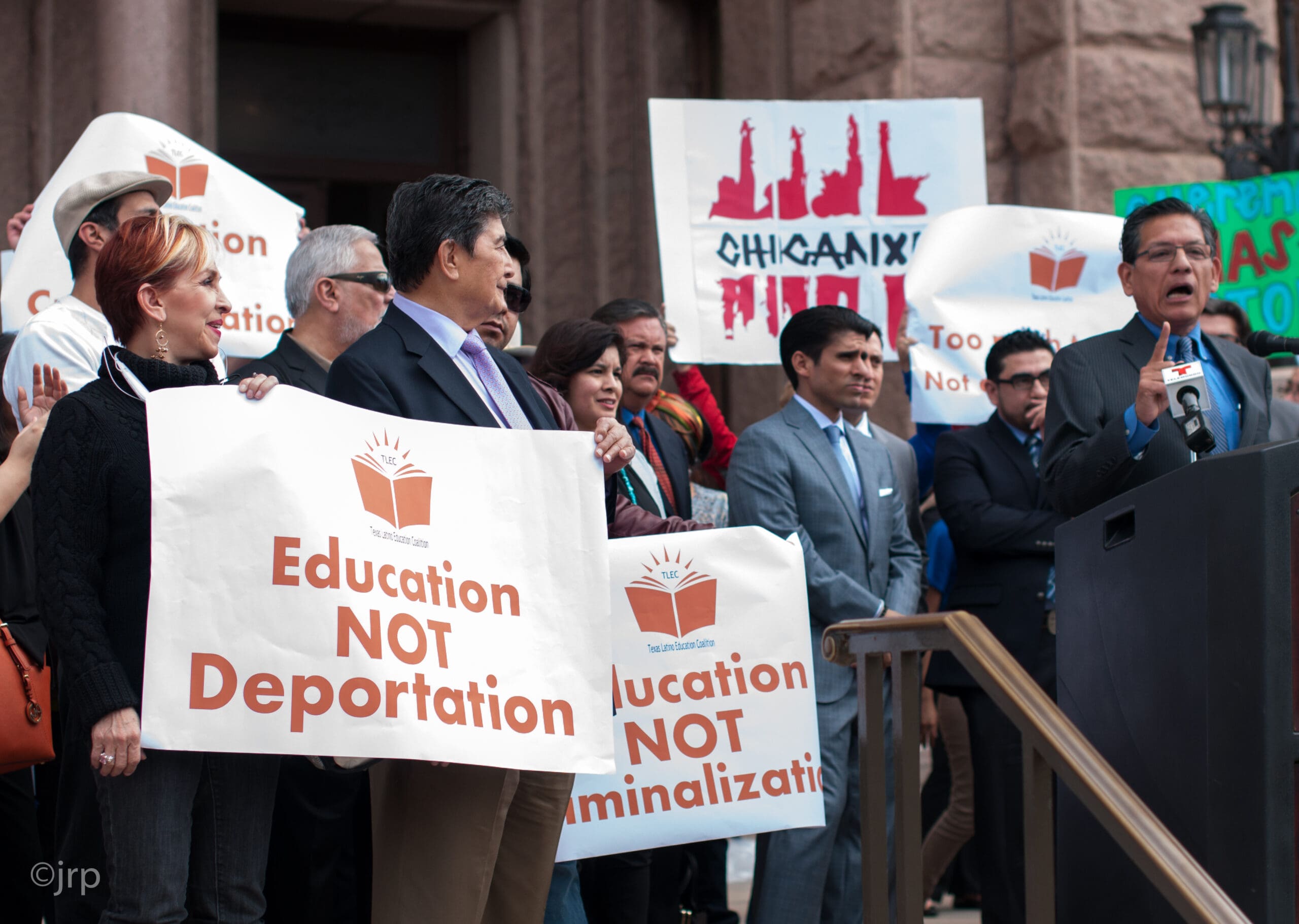Eventually, we will stop having this conversation, but once again, Texas is debating which federal law to disregard. This time, the question raised by Texas’ legislative leadership is whether or not it is a burden to the state and its taxpayers to educate children seeking refuge and opportunity in Texas. This is once again a topic of discussion because we have yet to accept as a society that being “American” is not solely defined by one’s birth in the United States. So, we continue to debate issues that were settled years ago. Our friends from MALDEF and IDRA have already addressed the federal guarantees made in Plyler v Doe. We simply remind you that multiple federal courts, including the Supreme Court, agreed that equal protections under the 14th Amendment require states to educate every child, regardless of their legal status or place of birth.
Immigrants have long been the favorite punching bag for people who were — if not their ancestors — also recent migrants to Texas. Not even the Comanche, who dominated Texas well into the 19th century, could consider themselves “native” to the land. (They were originally from the high plains and eastern steppe of the Rockies.) We’re all immigrants to Texas, and we would all be better for remembering this fact when considering changes to public policy.
Every Texan rejects the premise that any child could be a burden to our state, because all children deserve an education regardless of their place of birth. Empowered with a Texas public education, immigrant children — like their parents — pay forward any benefits they might receive. Taking the cost of public education into account, the Texas Comptroller special report “Undocumented Immigrants in Texas” of 2006 and the 2020 update by the Baker Institute show immigrants to the United States overwhelmingly benefit the Texas economy.
Immigrants, whose children we’re talking about, have more than $100 billion in yearly purchasing power. According to our 2017 report “Immigrants Drive the Texas Economy,” immigrants make up 18.4% of Texas business owners with paid employees and are self-employed at a higher rate (9.4%) than the native-born population (5.8%). These are people who contribute to the general revenue fund, and by doing so, pay for their child’s education like every other Texas taxpayer. If the public school system feels strained, it’s not the immigrant or refugee’s fault. To the contrary, immigrants may help us solve many of the problems faced by our schools and economy as a whole.
Since Deferred Action for Childhood Arrivals (DACA) took effect, more than 1,600 kids educated in Texas went on to become teachers in Texas as DACA recipients. Parents of immigrant children are not only paying for their education — those kids are growing up to fill the desperately vacant positions in our school system, an incalculable benefit to the state. We face dire labor shortages in our public schools, and it would be foolish — as it has been foolish — to cut off our nose to spite our face by questioning the impact of people who have and continue to benefit our state and nation.
Not only is it our constitutional duty, but it is also in our own self-interest as a state to welcome and educate immigrants and their children. Research shows that immigrants in public schools have a positive benefit to the performance of their U.S.-born peers. Add that to what we have long known about immigrants in Texas — that we need their labor to keep our economy churning — and you get more evidence for settling — once and for all — debates about educating immigrant children.
Facts about Immigrants in Texas:
According to the Migration Policy Institute,
- The estimated unauthorized population in Texas as of 2019 was 1,739,000.
- 64% (1,113,000) have lived here more than 10 years;
- 21% (364,000) are under 25 years old;
- and 87% (116,000) of the 133,000 ages 3 to 17 are enrolled in school.
- Immigrants comprised 29% of all parents of children ages 0 to 4, and 31% of all parents of children ages 5 to 10 in Texas.
- Among immigrant parents of children ages 0 to 4, 69% were Latino and 19% were AAPI.
- Among immigrant parents of children ages 5 to 10, 70% were Latino and 19% were AAPI.
- Meanwhile, roughly half of U.S.-born parents of children in both age bands were white, with smaller but significant populations of Latino (approximately 34%) and Black (13%) parents.
- Among immigrant parents, 26% of those with children ages 0 to 4 and 31% with children ages 5 to 10 were naturalized U.S. citizens.
- Immigrant parents of children ages 0 to 4 were significantly more likely to have lived in the U.S. for less than eight years as compared to those with children ages 5 to 10.
- Less than half (39%) of parents of children ages 0 to 4 had lived in the U.S. for 16 or more years, as compared to 51% for those with children ages 5 to 10.
- One in six working immigrant parents of children ages 0 to 4 and ages 5 to 10 in Texas was employed in industries vital to the COVID-19 response.
